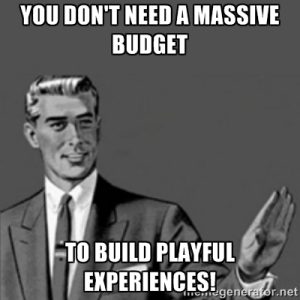
I love museum games. But I often hear “We have zero budget and therefore, we can’t build anything.” I see why people would think you can’t have playful, interactive experiences for your visitors if you’re not a large organization but I hate hearing it because it is just completely and absolutely not true.
Meaningful play can absolutely be built with no budget at all. All it takes is a little bit of time, some clever ideas and a willingness to test prototypes. If your visitors like it, that gives you the momentum to try again- and again- until maybe your board takes notice and says, “hey! Visitors are really responding to this, why don’t we give you some help?”
In fact I bet can think of a dozen ways that you can be building playful interaction in your museum even with no budget, a small collection and being short of staff. Do you dare me? Well then… challenge accepted. Here are 12 FREE things you could be building right now for free to make your space more fun and interactive.
1. Choose your own adventures:
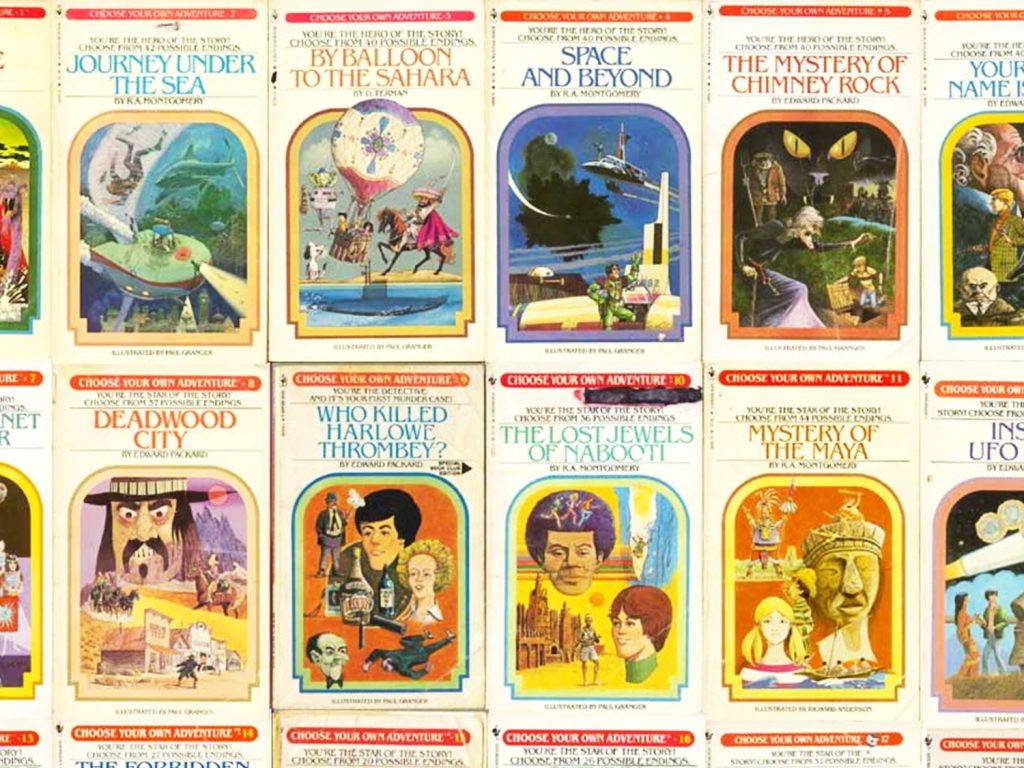
Remember those awesome books where you get to decide where to go next? You can make those with a paper and pen. “There are reports that X museum is being haunted by the ghost of X. You’ve been recruited to investigate. Enter the main parlor. If you investigate the cabinet, turn to page 2. If you pass through to the dining room, turn to page 5”. If you’ want a digital version, check out the wonderful (and free!) Quest http://textadventures.co.uk/quest and write a computer-based choose-your-own text adventure. Let visitors play through the settings of your paintings, time periods, through the perspective of one of your historical characters or from the point of view of an atom.
2. Clipboard games:
Leave behind clipboards with paper and a pencil tied to a string. Let people leave (respectful) messages, questions or observations for other visitors. Have them draw pictures of artifacts and let others guess what they drew. Use it to create an “exquisite corpse” game where they start a story about an artifact or historical event, fold the page over and let other people continue it. Put your exquisite corpse histories on FB, your blog or your website. http://en.wikipedia.org/wiki/Exquisite_corpse (The Baltimore Art Museum is doing a great job of this on their blog http://blog.artbma.org.) Lots of stuff can be done with clipboards!
3. Twitter games.

Take a close-up pictures of your artifacts and let people guess what they are. (This was one of the Smithsonian’s favorite games for a while.) @Midnight is doing an amazing job of twitter games right now with “Hashtag wars” where they give challenges like “#sadtoys” (answers: Strangers with Candy Land, Really Really Really Hungry Hippos”) Museum hashtag wars? For instance, #failedarttoys. (possible answers: Jackson Polluck Rubik’s cubes…Rothko paint-by-numbers)
4. Game Jams!!
Don’t want to build a game? Let your visitors do it for you. Set aside 48 hours and challenge your visitors to create the best scavenger hunt, choose-your-own adventure or interactive tour of your space. We just ran Edventure Builder game jams with kids at the Field Museum and the Harvard Museum of Natural History with some great results! The MIT Museum had an excellent board game jam as part of the Cambridge Science Festival. Set aside a time invite familes, arm them with a bunch of junk and a piece of cardboard and you might be surprised what they come up with! The best part is that they bring other visitors back to your space to play their games. http://www.greenapplecamps.com/events/
5. I spy
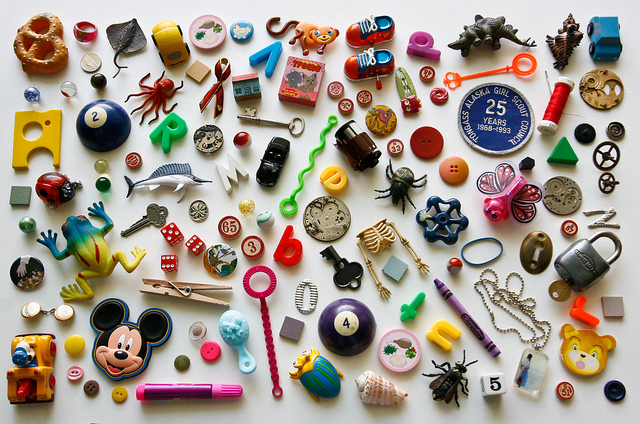
The Getty is running a great digital version of ISpy called Switch http://www.getty.edu/games/switch/ but Gore Place in Waltham Mass is also running a fabulous, simple paper-based version with questions like “find a chair back that looks like this”. You can create your own “switch” with simple digital pictures, some photoshopping and a printer.
6. VTS is a GREAT GAME!
Challenges to help people look at art, and they’re also good play. Give folks a clipboard with questions on them or add them to whatever platform you have to deliver content. “Name as many colors as you can in this photo until you run out. Whoever gets the last one wins.” “What is the person in this picture thinking?” http://www.vtshome.org
7. Themes:
Follow a theme through a museum- this is really fun because when you have a hammer, everything is a nail. If you send people through your space all looking for different things: eyes, pyramids, eagles, skulls, the color red, even you’ll be surprised how much they find.
8. Photo hunt:
If you can have pictures taken in your collection, there’s a lot of fun that can be had with that. Give people a list of photos that they have to take during their visit but make it super vague: The Bluest Blue, Me and My Fine Arts Doppelganger, Me and Elma Mae— see what they come up with and encourage them to send you their photos. Post them on your FB page and give prizes for the photos with the most likes.
9. Timelines:
hstry.org is a great place to build (free!) digital interactive historical timelines. Feeling non-techie? Create your own post-it note timelines near your exhibits and let your visitors add their own. Add a clothesline with some pins and put out index cards for visitors to add a new event to the timeline and clip it into the line. Start with something you’d like to add in 1: Louisa May Alcott is born….. (empty space) 20: Louisa May Alcott Dies. Encourage people to fill in the blanks and rearrange each other’s input as they add to it.
10. Borrow and share:
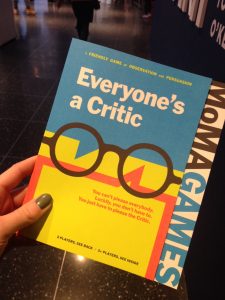
Museums are building great stuff and more often than not, they’re building it open source to share with YOU! Look around to see what you can use from other museums before you reinvent the wheel. The MoMA’s “everyone’s a critic” is open to use. (In fact they just tweeted yesterday “use this in your museum!”) Incorporate existing games into your museum experience like “Play Brave” missions http://www.playbrave.org or “Ingress” locations. http://www.ingress.com
11. Abuse college students
If you’re in New England and you don’t have a student intern in your space well then you’re not utilizing your resources. Even if you’re not in New England, I would wager there’s probably a college or high school closeby with intelligent young people who would love to build their resume by making something fun for your organization. Reach out to these organizations! I find it’s best to be very targeted: if you say “we want a game”, you may get a lot of starry-eyed post-teen writers. But if you go to a professor and say, “We’re a respected cultural organization, we’d like an experimental history game for families to play in August and it needs to be paper-based. Do you have any crackerjack students who could play with it for credit or a resume builder?” then see what you get!
12. Cannibalize Other games
I think the folks at the incredible Fablevision said it best (and I steal their line all the time) “the best games have known game dynamics and market-quality graphics.” We might not be able to get the market-quality graphics with our time and budget but we can give folks a twist on something they already know and love. Murder at the Met was successful because it built on a game that people knew: Clue. Candy Crush is just a variation on Bejeweled. Tate Trumps looks like a card game. Use simple games that people like to play: monopoly, go fish, 20 questions and make simple, paper variations on these games that use your space. Remember your goal is to have people learning and having fun, removing barriers to entry and letting people be more comfortable with art, science, history and culture so if you have to cheat a little and give people something they recognize to get there, that’s a-okay.
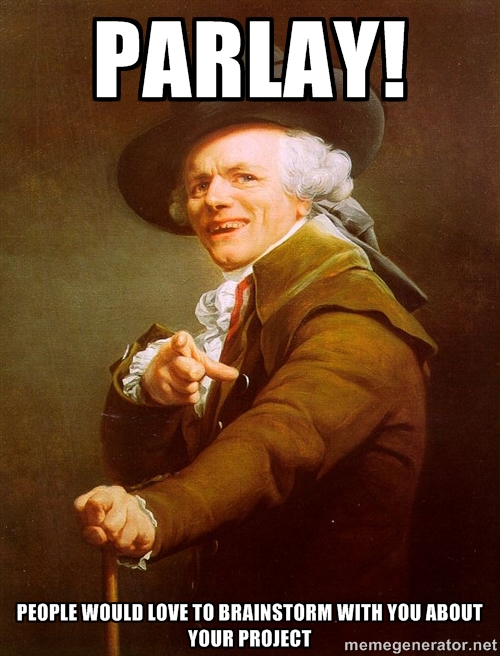
And last but not least, TALK! Follow hashtags like #musegames, #musetech and #G4C (games for change.) Connect with people like James Collins who’s heading up the search for better learning games at the Smithsonian or Susan Edwards, building great stuff at the Getty. Laura Huntimer from the Joslyn has great advice on how to run game jams with school groups and Sharna Jackson, formerly of the Tate and now of Hopster, always has excellent ideas. Keep an eye to the Museum Games Wiki. If you’re reading this blog then you already know me and I’m always game for a 20 minute call to hear about what you’re trying to do.
So you may not have a million dollar grant or a staff of 500 but you DO have some ideas- and you can start testing out those ideas right now!!
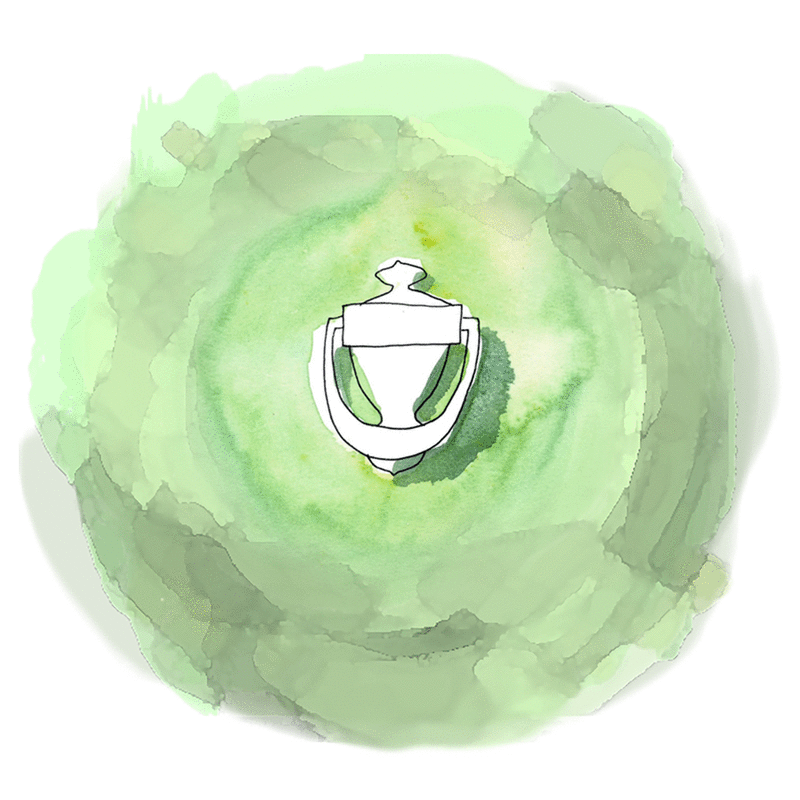

Leave a Reply